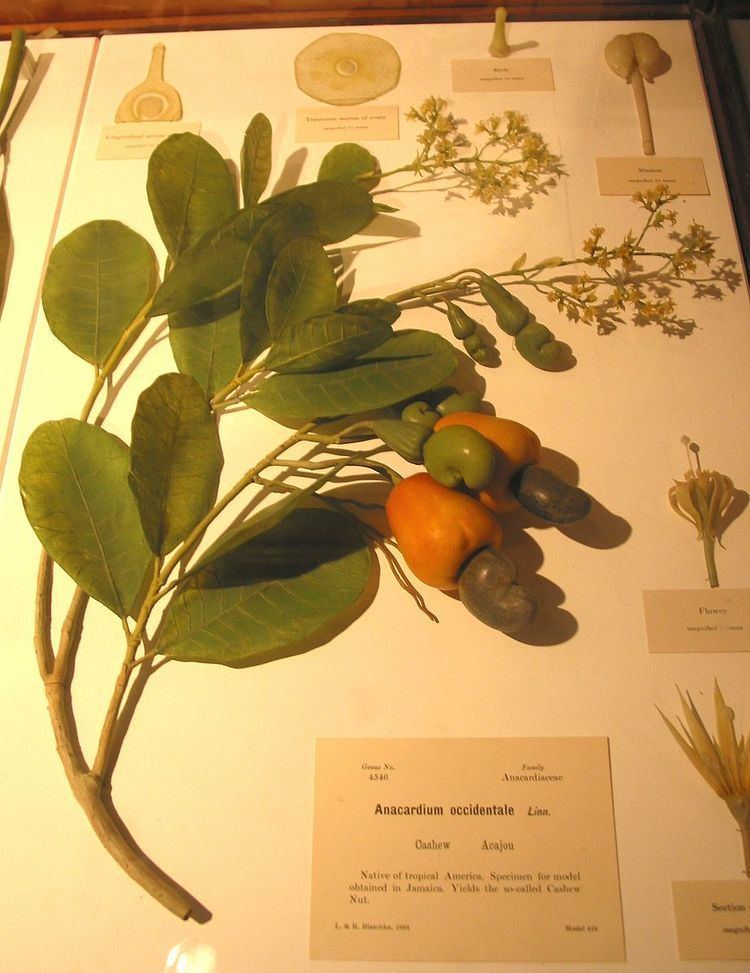 | ||
The The Ware Collection of Blaschka Glass Models of Plants (or simply the Glass Flowers) is a famous collection of glass botanical models at the Harvard Museum of Natural History at Harvard University in Cambridge, Massachusetts.
Contents
They were made by Leopold and Rudolf Blaschka from 1887 through 1936 at their studio in Hosterwitz, Germany, near Dresden. They were commissioned by George Lincoln Goodale, the first director of Harvard's Botanical Museum, to aid in teaching botany and was financed by Mary Lee Ware and her mother, Elizabeth C. Ware. It consists of 847 life-size models, representing 780 species and varieties of plants in 164 families, and some 3,000 detail models such as of plant parts and anatomical sections.
The making
After seeing several marine invertebrate models made by the Blaschkas, in 1886 Goodale went to Dresden to ask them to make series of botanical models for Harvard. Leopold was hesitant but agreed to make some sample models which, though damaged in customs, convinced Goodale of their value in botanical teaching, which at the time used pressed specimens – two-dimensional and tending to fade.
To fund the project Goodale approached his former student Mary Lee Ware and her mother, Elizabeth C. Ware, who were already liberal benefactors of Harvard's botanical department. The original arrangement (in 1887) provided the Blaschkas would work half time on the project, but 1890 a new arrangement called for them to work full-time. The work continued until 1936, at which point Leopold and Elizabeth had both died.
The collection is formally dedicated to Dr. Charles Eliot Ware, the deceased father and husband of Mary and Elizabeth Ware respectively.
The models
The models are glass with wire supports (internal or external), glue, a variety of organic media, and paint or enamel coloring. The Boston Globe has called them "anatomically perfect and, given all the glass-workers who've tried and failed, unreproducible."
It is often said that the Blaschkas employed secret techniques now lost; in fact their techniques were common at the time, but their skill, enthusiasm, and meticulous study and observation of their subjects in life were extraordinary, which Leopold ascribed to familial tradition in a letter Mary Lee Ware: "Many people think that we have some secret apparatus by which we can squeeze glass suddenly into these forms ... The only way to become a glass modeler of skill, I have often said to people, is to get a good great-grandfather who loved glass."
The Blaschkas primary technique was lampworking, in which glass is melted over a flame fed by air from a foot-powered bellows, then shaped using tools to pinch, pull or cut; forms were blown as well. Their old-fashioned Bohemian lamp-working table is part of the museum exhibit. Over the years Rudolf brought more and more of the entire process of production under his personal control, eventually even manufacturing his own glass and colorants.
Botanist Donald Schnell has called the models "enchanting". Whitehouse and Small wrote that "the superiority in design and construction of the Blaschka models surpasses all modern model making to date and the skill and art of the Blaschkas rests in peace for eternity."
The Glass Flowers draw some 210,000 visitors annually. During Harvard's Tercentenary celebration in 1936, a New York Times reporter wrote: "Tercentenary or no, the chief focus of interest remains the famous glass flowers, the first of which was put on exhibition in 1893, and which with additions at intervals since, have never failed to draw exclamations of wonder or disbelief from visitors."
Glass Sea Creatures
Prior to making the Glass Flowers, the Blaschkas had been successful suppliers of glass models of marine invertebrates. Cornell University has specimens of this work but most are at the Corning Museum of Glass in Corning, New York.. Others are at various institutions around the world.
